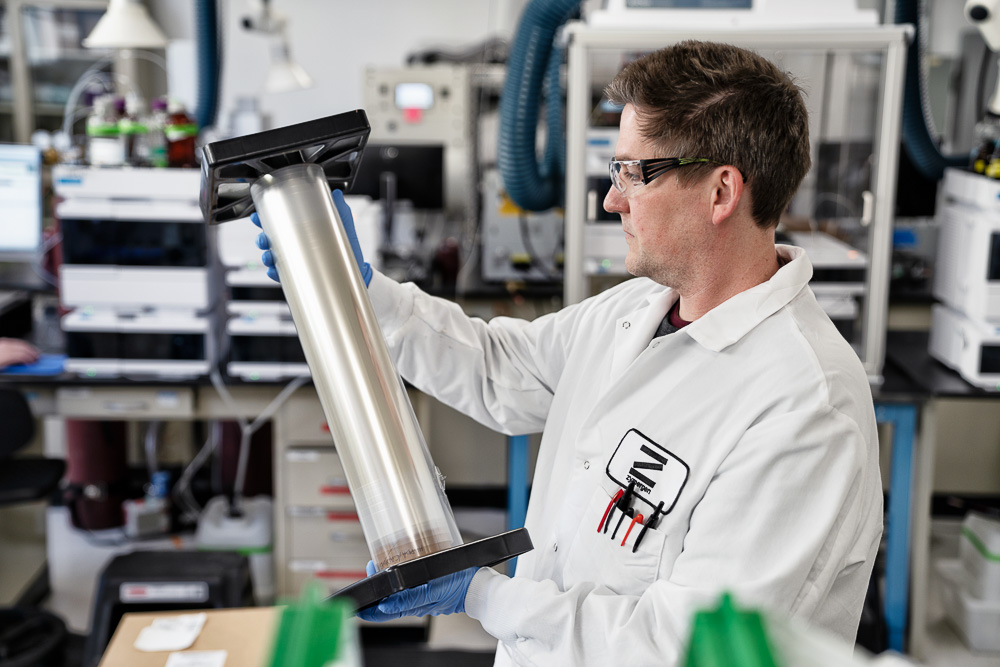
Just over three months after wowing Wall Street with a $575 million initial public offering (IPO), synthetic biology company Zymergen lost nearly 70% of its share price as the company acknowledged that it will make no product revenue this year and “immaterial” revenue in 2022 due to unspecified technical problems with its lead product, and the CEO has resigned.
Zymergen’s board chairman Jay Flatley has been named the company’s acting CEO, succeeding Josh Hoffman, a co-founder of the company in 2013 who stepped down immediately from the company’s helm and its board—by “mutual decision,” Zymergen said in a statement. Flatley stepped down from Illumina’s board as of May 26 after 22 years of leading the company as CEO, executive chair, and later chairman.
“The Board will take whatever time is needed to conduct a thorough search to identify a world-class leader for Zymergen. Until then, I am committed to working with our deep bench of talent to drive our company forward,” Flatley said in a statement.
“The underlying promise of our business and technology is sound, and I am proud of the work our teams are doing across the organization,” Flatley insisted. “We are confident in Zymergen’s opportunities and prospects, although it will take longer to accomplish our goals than previously expected.”
Zymergen acknowledged that it will not generate revenue later this year as expected from the first product it brought to market in December, the transparent polyimide film Hyaline. Zymergen had planned to start a product qualification process with customers that it expected would take 6—18 months.
Envisioned as the first in a franchise of optical films for electronics companies, Hyaline is designed for use in display touch sensors in personal devices and other uses, with applications that include foldable touchscreens and high density flexible printed circuits.
“During the quarter, several key target customers encountered technical issues in implementing Hyaline into their manufacturing processes typical of new product and process development learnings,” Zymergen stated. “The Company has made significant progress towards addressing these challenges and believes there are no intrinsic technical issues with Hyaline. However, this issue has resulted in a delay in the Company’s commercial ramp.”
Zymergen did not detail the technical issues encountered by customers attempting to apply Hyaline, but did say it was working to strengthen its commercial team “to ensure the reliability and robustness of the sales pipeline qualification and forecast processes.”
“We Are disappointed”

Said Flatley: “We are disappointed by these developments, and the Board and management team are focused on resolving the underlying issues to ensure Zymergen moves forward as a stronger company with a compelling operating plan.
Investors responded to the bad news with a stock selloff that sent Zymergen shares freefalling 68%, to $11.02 as of 7:59 p.m. ET, from Monday’s close of $34.84, which was up 2.35% from Friday. [Shares continued to fall today, finishing trading at $8.25—bringing the decline to 76%].
The stock plunge led to downgrades of Zymergen’s stock from investment firms that included Cowen & Co. (from outperform to market perform) and J.P. Morgan (from overweight to neutral).
During its IPO, Zymergen sold 18,549,500 shares at $31 a share, generating $529.6 million in net proceeds—the largest-ever IPO for a synthetic biology company. Zymergen’s shares have traded as high as $52.
“So much for due diligence guys,” tweeted Maxim Jacobs, CFA, Managing Partner & Director of Research for North America for Edison Investment Research.
The company’s eye-popping IPO helped place Zymergen among “”up & Comers” in GEN’s A-List of Top 10 Synthetic Biology Companies, published July 2.
“There are some big holes in the scrutiny of the syn bio sector,” Brad Loncar, CEO of Loncar Investments, tweeted yesterday. “An analyst on the $ZY [quarterly conference] call just had a very revealing comment. He said we understand biology but know nothing about the electronics market. And that analysts were relying on the company for market guidance.”
Tweeted So Tsuda, Executive officer/Head of R&D at bitBiome, the developer of a single-cell whole-genome analysis platform: “Hope this doesn’t pour cold water on the whole #synbio community.”
It shouldn’t dampen investment and other support for synthetic biology, urged Fiona Mischel, Editor-in-Chief at SynBioBeta, a community of engineers, investors, and other synbio stakeholders.
“Our entire industry is built partnering with nature in our effort to make a better world. But catching up to her genius when she has a 4 billion-year head start is going to take a significant time and money. But it’s a partnership that we absolutely must make for the sake of future generations,” Mischel wrote in today’s edition of SynBioBeta Digest.
“This is a call for transparency, accountability, and a recognition that we shouldn’t hype what we want to have until we have achieved it,” Mischel added. “At the end of the day, the people who need our help the most are the average citizen. We cannot serve them and our planet if we tell the world we can run before we can walk. Because our world needs us to run.”
Zymergen bases its synthetic biology on a manufacturing approach that it calls “biofacturing.” That approach integrates molecular biology, chemistry, materials science, lab automation systems, software applications, unique databases, and machine learning algorithms into a three-step process:
- Design Product—identifying and creating novel biomolecules that are the basis of new materials with engineered characteristics possessing improved performance compared to in-market products. Zymergen estimates this step can be accomplished in 1–2 years at a cost of approximately $5 million;
- Create Microbe—inserting genes into a host microbe that produces the desired biomolecules over about a year, at $5 million;
- Scale Production—developing and scaling up a production process including optimizing the microbe to produce biomolecules economically at scale while retaining product functionality, leading to commercialization at attractive margins—three years at about $40 million.
Headquartered in Emeryville, CA, Zymergen aims to launch its products in about half the time and a tenth of the cost incurred by traditional chemical and materials companies.
100M to $300M revenue range

According to a presentation during the earnings call, Hyaline was expected to be the company’s sole launched product this year—to be joined in 2022 by ZYM0107, the second optical films product and a high-performance optical film like Hyaline. Two additional launches are envisioned in 2023:
- ZYM0101, a third optical film, designed for use in foldable and rollable phones and personal devices, as insulation for antennas to deliver 5G data speeds and as a coating for transparent monitors.
- ZYM0201, a naturally derived non-DEET insect repellent consumer product.
The two are among a pipeline of 10 products in three segments—three products in electronics (the largest market opportunity at $59 billion), four with consumer-care applications ($44 billion), and three in agriculture ($47 billion).
By contrast, Zymergen estimated in its IPO that the display market alone for Hyaline was more than $1 billion in 2020. That market forecast may have been too rosy, Zymergen also acknowledged.
“The Company is also evaluating emerging data on the total addressable market for foldable display applications, which indicate a smaller near-term market opportunity that is growing less rapidly than anticipated, as well as its impact on Zymergen’s sales forecast.
Zymergen also said that it will conduct a full re-examination of its target markets “confirming our past views or altering them if the data indicate a shift in market focus is appropriate.”
Flatley said Zymergen’s board has formed dedicated committees, including a Strategic Oversight Committee, and is working with outside experts to conduct an in-depth review of the Company’s operational, financial, product, and commercialization efforts to facilitate the development of an updated strategic plan for Zymergen.
“Hope they can turn things around with the rest of their pipeline #synbio,” tweeted Aditya M. Kunjapur, PhD, assistant professor of chemical & biomolecular engineering at the University of Delaware’s Department.


